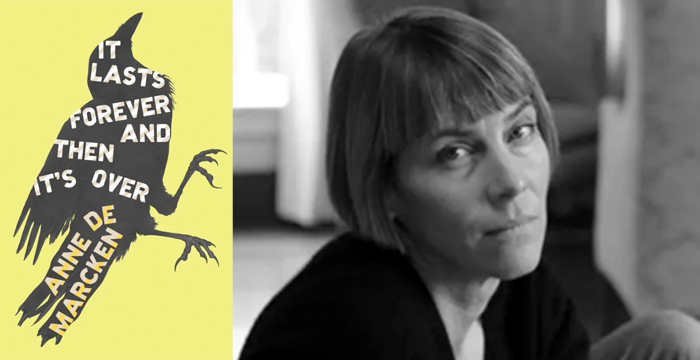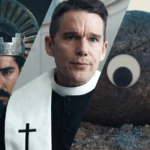Review: It Lasts Forever and Then It’s Over, Anne de Marcken, Giramondo
What happens after we die? In the Bible, we see the development of the idea of reconciliation with God and a perpetuation of some sort of existence. Later, this doctrine is developed into eternal punishment or reward. Then, in the medieval church, the idea of purgatory appears – a holding place, otherwise known as limbo, now a word used more generally for an in-between state where we can go neither forward nor back. In Greek mythology, there is the possibility of getting stuck on the bank of the Styx River in the afterlife, unable to complete the journey.
In horror stories, the figure of the zombie exemplifies the unease about this in-between state. Part of the horror is the indeterminacy. Anne de Marcken plays with this masterfully with her novel, giving us access to the thoughts of the undead protagonist. The novel is the joint winner of the transnational Novel Prize, awarded to novels that are ‘innovative and imaginative’, and its unsettling nature comes from its unusual status as a literary zombie novel, the elegant prose contrasting with the goriness of its premise.
The narrator resides (lives?) in some post-apocalyptic landscape, where some humans remain, threatened by what we might like to think of as an alternative community of zombies. The zombies themselves display little of the cartoon ridiculousness of zombie movies and The Simpsons parodies; rather, they seem like the victims of some catastrophe themselves. Here, similarity to the living, in a psychological sense, engenders sympathy.
The narrator is with a group in an abandoned hotel, where one of the zombies is creating some sort of religious ritual. Others are doing odd things to themselves, the sense of purpose within a human life unmoored. The ‘revival’ guy observes that being undead is not like being dead: the zombies converse, they feel cold and hunger, they respond to light and noise. They are mobile and autonomous and can feel a kind of pain, if only psychological. But they now have a strange relationship to their bodies, which they can use to walk underwater (since they have already died, they can’t drown) but which are decaying. The narrator has lost an arm, and at one point stuffs a dead crow into what remains of her chest cavity. And they hunger for eating people, which in de Marcken’s description sounds vaguely like demonic possession.
The narrator embarks on a walk (possibly a nod to Cormac McCarthy’s The Road) to return to a special place by the sea where she spent time with a partner. This ache for the former life is as strong as the hunger. The novel is supposed to have a dark humour about it – and I suppose it does – for example, at one point the main character is decapitated (I won’t tell you why) and she carries her head under her arm, commenting as she does that it is hard to walk because the ground now appears closer than it is – but the sadness here of living out days after the loss of a loved one, which is not exclusive to the zombie, gives this poignancy.
Part of the sadness is the open-ended nature of this grieving. There is tension between time-bound humanity and a post-death world. The narrator comments how time is disoriented and ‘superfluous’ – with no end point, or it being circumvented, activity is pointless, and a minute is no different to a year, as indicated by the stretched chronology of the narrative.
The more I think about it, the more I feel how much this weird narrative of the undead refers to fundamental human questions, either deliberately or inadvertently. The zombie is a negative version of the wish to live forever. The relationship to the body, especially with regards to the narrator’s decapitation (which has no effect on the continuity of the narrator’s awareness of the world) may hint at Cartesian separation of mind (or soul) and body. As the book progresses, de Marcken explores, in grisly fashion, the issue of where identity is centred – the narrator’s body is increasingly strange. The loss of an arm, as serious as it is, wouldn’t seem to question one’s identity, but when her head becomes separated from her body, where is her self? And as she becomes literally detached from her body, and is nostalgic for her lost life with a lover, her identity is clearest not in relation to her body, but in her relationship to another.

There is also a kind of meditation on the relationship of life to death. Lying under an apple tree in an abandoned backyard, the narrator muses that in nature life builds on death, heading inexorably towards death, and all is fluidity and circularity. And to be in the midst of life is itself a kind of indeterminacy, to be autonomous but not in control – life is in some ways like what one of the undead characters describes: ‘the feeling of needing to let go and the feeling of having let go.’
Nick Mattiske blogs on books at coburgreviewofbooks.wordpress.com and is the illustrator of Thoughts That Feel So Big.













